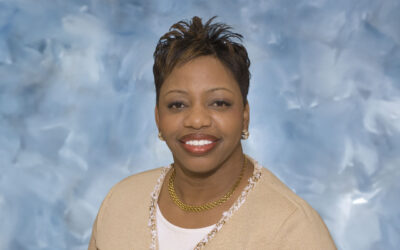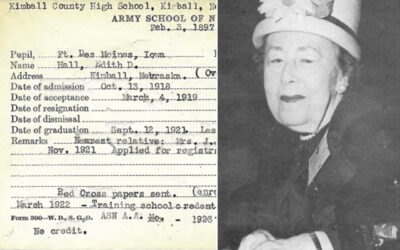By Matt Skoufalos
 For Ed Friloux, emergency medical service (EMS) is a family business. A second-generation EMT and the son of a retired New Orleans firefighter, Friloux joined the fire service after the conclusion of his naval career, and became a paramedic in Gulfport, Mississippi. Among the many incidents through which he provided care, Friloux was on duty during Hurricane Katrina, and recalled taking a swim when his ambulance hit some eight feet of water during that storm.
For Ed Friloux, emergency medical service (EMS) is a family business. A second-generation EMT and the son of a retired New Orleans firefighter, Friloux joined the fire service after the conclusion of his naval career, and became a paramedic in Gulfport, Mississippi. Among the many incidents through which he provided care, Friloux was on duty during Hurricane Katrina, and recalled taking a swim when his ambulance hit some eight feet of water during that storm.
All along, Friloux kept his eyes on his dream of becoming a flight nurse. To bolster his resume, he completed certificate programs at Mississippi Gulf Coast Community College, then returned home to Lafayette, Louisiana to finish nursing school when his father fell ill. There, he worked in a cardiac care unit at Lafayette General, then continued on to Our Lady of Lourdes Regional Medical Center for four years while he built the skills that would qualify him for his career of choice.
He kept up his paramedic certifications until the right opportunity finally opened up, and today, Friloux is a board-certified emergency nurse, a registered paramedic, a registered nurse, and the Base Clinical Lead Flight Nurse for Air Evac Lifeteam Base 124 of Opelousas, Louisiana.
Air nursing is an extension of EMS, and Friloux’s task is to rapidly transport critical-care patients from rural areas to health care facilities in which they can receive the best care for their condition. His caseload typically includes advanced cardiac transports, stroke patients; incidents that require urgent medical evacuation and which extend hospital resources into areas of the country too far removed from them.
“If you have a traumatic patient, they really need to get to a Level I trauma center,” Friloux said. “We’re out in the boondocks; we have a lot of farmers here. It’ll take an hour for the ambulance to get to the closest trauma center in New Orleans, Shreveport; Jackson, Mississippi. We can get there in 30 minutes.”
That timeframe, which professionals refer to as “the golden hour” to transport a patient from the scene of an incident to a place of medical care or surgery, greatly improves the chances of survival. Flight nurses operate in an even smaller window that EMTs call “the platinum 10 minutes,” which is the ideal amount of time to get a patient off the scene, Friloux said.
The crew – which includes a nurse, a pilot and a paramedic – travels in a Bell 206, single-engine, long-range helicopter. Top speed is about 110 miles per hour, and Friloux describes the conditions as cramped but the ride as smooth.
“You get real personal with your partner or any patient, but you just do what you’ve got to do,” he said. “It’s loud, but it’s fun. You’re looking out the window and you see this picture of the countryside, which is breathtaking sometimes.”
On the chopper, pilot, nurse and medic all work together like a firehouse crew, working back-to-back 12-hour shifts. In their down time, they complete online training, hang out, cook – and then check the weather when the tones drop: the cue that they’re going to be dispatched to a rescue scene. The destination comes in over the radio once they’re airborne.
From any preliminary information they have, the crew must come prepared “to try to make that scene time as short as possible,” Friloux said.
Flight crews are deployed with the help of status management software; posted throughout a region based on predictive data software. When one unit gets a call, the others shift to better cover the area. Air Evac Lifeteam operates bases throughout the country, with each situated about 70 nautical miles apart from one another. Across such a wide geographic theater of operations, Friloux must keep up his licensure in Mississippi, Louisiana, Texas and Arkansas.
He also has to keep a thick skin when the joking gets edgy. In the high-pressure environment of flight nursing, “you’ve got to have the kind of personality that things bounce off of you,” Friloux said.
“If we don’t pick on you, we don’t like you,” he said. “You’ve got to be able to handle the stress and the pressure [because] families, when they see us, it’s the worst day of their lives.”
“Everybody’s put on this earth to do special things,” Friloux said. “For me, [flight nursing is] home, but I’m more relaxed there than with other things.”
After 25 years, the most rewarding aspect of his job is still the chance to save a life, Friloux said. Once, over lunch, dispatch radioed in to check his location, and not long after, a man approached and asked for his name.
“He said, ‘I want to extend my gratitude to you,’ ” Friloux recalled. “‘You saved my life a few months ago.’”
“You don’t get true saves that often, but when you do, it’s worth the training and everything else,” he said. “You see a lot of the bad side of society, unfortunately, but when you get those occasional saves, it really makes your day.”
Nursing is a broad profession, but specialties like flight nursing allow it to touch a variety of lives and people. For those interested in the job, Friloux recommends learning event management and laboratory specialties; and getting paramedic, emergency, and critical care or flight nurse certification. Temperamentally, he said emotional resilience is key, since flight nursing can be a tough field to crack.
“If you have a chance to work in an ICU, you learn a lot about lab levels,” Friloux said. “In an emergency room, you get different types of prioritizing. Some companies require five years [EMS service] in a high-volume 9-1-1 area to get your hands-on experience.”
“It’s not an easy field to get into, to get your foot in the door,” he said. “Don’t get discouraged by your first turn-down. Keep chiseling away at it; someone will pick you up. You might not be the right fit for one base, but you might be the right fit for another base.”










Ed Friloux! Way to be there buddy!